PEOPLE OF IDEAS

THE FIRST HALF OF THE 20th CENTURY
By Alphabetical Order:
A
Auburn Affirmation
Ayer,
A.
J.
B
Bailey,
Alice
Barth,
Karl
Besant,
Annie
Beauvoir,
Simone
de
Benedict XV (Pope)
Bohr,
Niels
Bonhoeffer,
Dietrich
Born,
Max
Broglie,
Louis-Victor
Duc de
Brunner,
Emil
Bryan,
William
Jennings
Buber,
Martin
Bultmann,
Rudolph
C
Carnap,
Rudolf
Cayce,
Edgar
Chamberlin,
Thomas
C.
Chesterton,
G.
K.
Compton,
Arthur
Holly
Croce, Benedetto
Curie,
Marie
and Pierre
D
Darrow,
Clarence
Dewey, John
Dirac,
Paul
E
Edington,
Arthur
S.
Einstein,
Albert
Evans-Pritchard,
E.E.
F
Fermi,
Enrico
Ford,
Henry
Fosdick,
Harry
Emerson
Frazer,
James
George
Freud,
Sigmund
G
H
Heidegger,
Martin
Heisenberg,
Werner
Holmes,
Oliver
Wendell, Jr.
Hubble,
Edwin
Humanist
Manifesto
Huxley,
Aldous
Huxley,
Julian
J
Jansky,
Karl
Jaspers,
Karl
Jeans,
James
Jung,
Carl
Gustav
K
Krishnamurti,
Jiddhu
|
L
Leadbeater,
C.
W.
Leeuw,
Gerardus
van der
Lemaître,
Georges
Lenin,
Vladimir
Ilyich
Levi
Levi-Strauss,
Claude
Lewis,
C.
S.
M
Machen,
John
Gresham
Malinowski,
Bronislaw
Marconi,
Guglielmo
Margenau,
Henry
Maritain,
Jacques
Moore,
G.
E.
N
Niebuhr,
H.
Richard
Niebuhr,
Reinhold
O
Otto,
Rudoph
Ouspensky,
P.
D.
P
R
Richards,
I.
A.
Reber,
Grote
Rosenberg,
Alfred
Russell,
Bertrand
Rutherford,
Ernest
S
Schlick,
Moritz
Schrödinger,
Erwin
Schweitzer,
Albert
Scopes "Monkey
Trial"
Shapley,
Harlow
Skinner,
B.
F.
Slipher,
Vesto
Sorel,
Georges
Sorokin,
Pitirim
Alexandrovitch
Spengler,
Oswald
Steiner,
Rudolf
Stevenson,
Charles
T
Teilhard de Chardin,
Pierre
Thomson,
J.
J.
Tillich,
Paul
Toynbee,
Arnold
J.
V
Van Til,
Cornelius
W
Weil,
Simone
Wells,
H.G.
Whitehead,
Alfred
North
Wittgenstein,
Ludwig
Wulf,
Maurice
de
|
LOGICAL POSITIVISM
AND ANALYTIC PHILOSOPHY |
|
The "Logical Positivism"
of the Vienna Circle
This movement was formally
launched with the Vienna Circle in the 1920s, though it had influential
predecessors among the linguistic analysts Wittgenstein and Richards.
It claims that the language of metaphysics and religion is not false – it
is merely meaningless. Existentialist philosophy is also meaningless
because "experience" cannot be proven or demonstrated as to its truthfulness.
Philosophy should limit its focus on that which is immediately demonstrable
by empirical logic. Linguistic analysis (the language of logic) is
at the heart of the work of Logical Positivism.
 Major
works or writings of the Vienna Circle: Major
works or writings of the Vienna Circle:
Wissenschaftliche
Weltauffassung. Der Wiener Kreis (A Scientific World-View: The Vienna Circle)
(1929)
Schriften zur wissenschaftlichen
Weltauffassung (Papers on Scientific World-View) (eds. Schlick
and Frank: 1928-1937)
Ludwig Wittgenstein
(1889-1951)
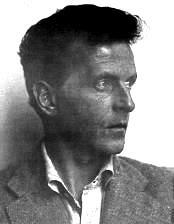 He
grew up in Austria, and began study of engineering in Berlin at the age
of 14, moving on to study at the University of Manchester in England (1908-1911)
and then Cambridge University, where he studied under Bertrand Russell
(1912-1913). He left England to join the Austrian army when World
War One broke out, was subsequently captured in Italy, and while in prison
wrote his his Tractus Logico-Philosophicus (1918) This was
published in German in 1921 and, with the help of Bertrand Russell, in
English in 1922. He
grew up in Austria, and began study of engineering in Berlin at the age
of 14, moving on to study at the University of Manchester in England (1908-1911)
and then Cambridge University, where he studied under Bertrand Russell
(1912-1913). He left England to join the Austrian army when World
War One broke out, was subsequently captured in Italy, and while in prison
wrote his his Tractus Logico-Philosophicus (1918) This was
published in German in 1921 and, with the help of Bertrand Russell, in
English in 1922.
After the War Wittgenstein took up
the work of a rural elementary school teacher in Austria (1920-1926).
Then from 1926 to 1929 he worked at various hands-on jobs in Austria.
But contact with the Vienna Circle convinced him to return to the life
of philosophy; he thus returned to Cambridge and philosophical research
and lecturing. In 1938 he became a British citizen and the following
year a professor at Cambridge.
But when World War Two broke out
he again volunteered for war service (with the British). With the
War's end in 1945 he returned to his professorship at Cambridge for a couple
of years. But then he retreated to Ireland to begin work on his Philosophical
Investigations. But in 1951 he died of cancer, and this work was not
published until two years after his death.
Initially he had a great influence
on the Vienna Circle (most of whom moved to the US in the 1930s) with his
Tractus
Logico-Philosophicus.
But he broke from the Circle later
in life. In his Philosophical Investigations, he was very
critical of philosophical systems (such as Logical Positivism). He
still felt that the task of philosophy was to focus on an analysis of language – but drew back from the idea that such analysis could lead to the development
of whole intellectual systems.
 Wittgenstein's
major works or writings: Wittgenstein's
major works or writings:
Tractus Logico-Philosophicus
(1922)
Philosophical Investigations(1953)
Remarks on the Foundations
of Mathematics (1956)
The Blue and Brown Books
(1958)
On Certainty (1969)
I. A. Richards
English Humean scholar who had a
strong influence on the Vienna Circle
 Richard's
major works or writings: Richard's
major works or writings:
The Meaning of Meaning
(1920)
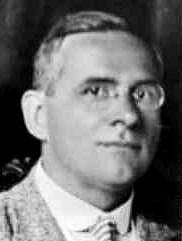
Moritz
Schlick (1882-1936)
Professor at Vienna (1922-36) and
early leader of the Vienna Circle.
We can communicate the content of
our personal experiences only through the conventionalized forms of social
language: only through the form of language does experience of one person
have any meaning for another person.
 Schlick's
major works or writings: Schlick's
major works or writings:
Raum und Zeit in der
gegenwärtigen Physik (1917)
Allgemeine Erkenntnislehre
(1918)
Fragen der Ethik (1930)
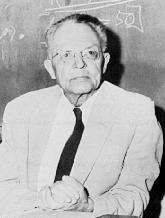
Rudolf
Carnap (1891-1970)
Carnap went well beyond Schlick in
attempting to bring a precise order to empirical language by categorizing
various kinds of empirical statements into types or "protocol- statements."
To Carnap there are various kinds of hierarchies in language – with the
precise language of empirical science being potentially the highest form
of language.
 Carnap's
major works or writings: Carnap's
major works or writings:
The Logical Structure
of the World (1928)
Philosophy and Logical Syntax
(1934)
Testability and Meaning(1936-1937)
Introduction to Semantics
(1942)
Meaning and Necessity
(1947)
Logical Foundations of Probability
(1950)
The British "Analytic
Philosophy"
Analytic philosophy is the
British cousin of Austrian/German logical positivism. It too
is an early twentieth century reaction to Hegel's philosophical Idealism
that for 100 years dominated European academic philosophy. Analytic
philosophy tried to build philosophical "reality" on concrete, even mathematical,
foundations – rather than on the passionate stirrings of the romantic heart
(on which Idealism was accused of resting). Bertrand Russell and
G.E. Moore at Trinity College, Cambridge, are recognized as the founders
of this British philosophical movement.
Bertrand Russell
(1872-1970)
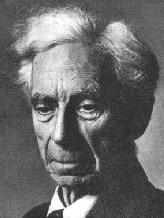 Cambridge
professor of mathematics at Trinity College. He was a mathematician,
logician and philosopher – helping to develop, along with G.E. Moore, analytic
philosophy. He was also a vehement pacifist – ending up in trouble
with civil authorities for his pacifist stance in World War One (six months
in prison in 1918) and his anti-nuclear position during the Cold War (imprisoned
again in 1961). Cambridge
professor of mathematics at Trinity College. He was a mathematician,
logician and philosopher – helping to develop, along with G.E. Moore, analytic
philosophy. He was also a vehement pacifist – ending up in trouble
with civil authorities for his pacifist stance in World War One (six months
in prison in 1918) and his anti-nuclear position during the Cold War (imprisoned
again in 1961).
He believed in the ability of the
learned individual to make the right moral choices, such as might steer
history toward a higher course. He opposed superstition (religion)
as being the source of so much evil in human history – -for to Russell religion
had long clouded the thinking of people and had led them to undertake horrible
actions in the name of their religious crusades.
He dedicated his work to trying to
define the kinds of empirical-logical certainties that would step humans
beyond what he saw was mere fancy and bias in our thinking. He tried
to build a precise science of learning, of conceptual development, of word
usage.
 Among
Russell's 55 books are: Among
Russell's 55 books are:
The Principles of
Mathematics (1903)
Principia Mathematica
(1910-1913) with A.N Whitehead
Introduction to Mathematical
Philosophy (1919)
The Analysis of Mind
(1921)
The A B C of Relativity
(1925)
The Analysis of Matter
(1927)
Education and the Social Order
(1932)
A History of Western Philosophy
(1945)
Human Knowledge, Its Scope
and Limits (1948)
Mysticism and Logic
(1957)
Why I Am Not a Christian
(1967)
G. E. Moore (1873-1958)
G. E. (George Edward) Moore was a
close associate of Bertrand Russell's; and also in Trinity College at Cambridge,
as fellow (1898-1904), lecturer (1911-25) and professor (1925-39)
Moore helped develop Wittgenstein's
philosophy at Cambridge – -and, with Bertrand Russell, developed analytic
philosophy.
He was an empiricist who believed
in the reliability of "common sense." He distrusted high abstractions
of reality and particularly objected to the high-flown theorizing on the
part of the "idealist" philosophers of the German Hegelian mindset.
He objected to the splitting of hairs over the meaning of words – for most
concepts cannot be exactly defined, such as "yellow." They are merely
something that is understood. Where there is no such understanding,
no amount of explanation will bring another person to understand them.
 Moore's
major works or writings: Moore's
major works or writings:
Refutation of Idealism
in Mind (1903)
Principia Ethica (1903)
A Defense of Common Sense
Ethics (1912)
Philosophical Studies
(1922)
A. J. Ayer (1910-
)
 Ayer's
major works or writings: Ayer's
major works or writings:
Language, Truth and
Logic (1936)
Charles Stevenson
 Stevenson's
major works or writings: Stevenson's
major works or writings:
Ethics and Language
(1945)
|
THE NEW LOOK OF ASTRONOMY
AND PHYSICS |
|
1. GENERAL
PHYSICS
Thomas Chrowder
Chamberlin (1843-1928)
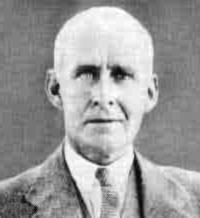 Arthur
S. Edington (1882-1944) Arthur
S. Edington (1882-1944)
 Edington's
major works or writings: Edington's
major works or writings:
Stars and Atoms
(1926)
The Internal Constitution
of the Stars (1926)
The Nature of the Physical
World (1928)
New Pathways in Science(1935)
Fundamental Theory(1946)
Science and the Unseen World
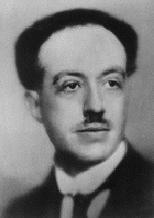 Louis-Victor
Duc de Broglie (1892-1987) Louis-Victor
Duc de Broglie (1892-1987)
 Broglie's
major works or writings: Broglie's
major works or writings:
Recherches sur la
théorie des quanta (Researches on the quantum theory)(Thesis,
1924)
Ondes et mouvements (Waves
and motions) (1926)
Matter and Light: The New
Physics (1939)
The Revolution in Physics
(1953)
Physics and Microphysics(1955)
New Perspectives in Physics
(1962)
Étude critique des
bases de l'interprétation actuelle de la mécanique ondulatoire
(The Current Interpretation of Wave Mechanics: A Critical Study)
(1963)
|
|
|
2. ASTRONOMY
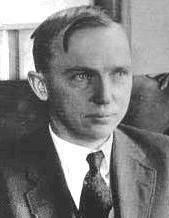 Harlow
Shapley (1885-1972) Harlow
Shapley (1885-1972)
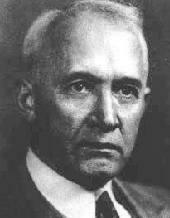 Vesto
Slipher (1875-1969) Vesto
Slipher (1875-1969)
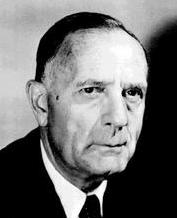 Edwin
Hubble (1889-1953) Edwin
Hubble (1889-1953)
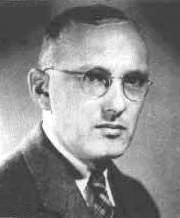 Karl
Jansky (1905-1950) Karl
Jansky (1905-1950)
Grote
Reber
An American ham operator who discovered
cosmic radio waves – -of a very long variety (6 feet) – emitted by distant
stars within our Milky Way.
|
|
|
3. ELECTROMAGNETIC
AND ATOMIC THEORY
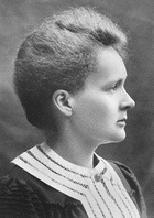 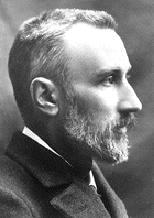 Marie
and Pierre Curie (Marie: 1867-1934 / Pierre: 1859-1906) Marie
and Pierre Curie (Marie: 1867-1934 / Pierre: 1859-1906)
 Guglielmo
Marconi (1874-1937) Guglielmo
Marconi (1874-1937)
In 1901 Marconi successfully transmitted
radio waves across the Atlantic from England to the United States.
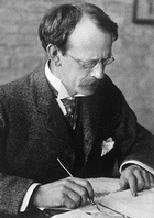 J.
J. (Joseph John) Thomson (1856-1940) J.
J. (Joseph John) Thomson (1856-1940)
It was the English scientist J.J.
Thomson who gave the first satisfying explanation of the inner structure
of the atom – at least to the extent of identifying electrons (which Thompson
at the time called "corpuscles"). The scientific world was fascinated
with the ability of cathode rays to pass through vacuum tubes – with no
means of conveyance for "waves" to pass through. Speculation was
that these rays were not waves but were particles. It was Thomson
who was able to conclusively demonstrate that indeed cathode rays were
actually a flow of minute particles – corpuscles (electrons) – given off
by atoms. Thomson noted that these particles were very much alike
for a variety of materials – and concluded that these particles were themselves
quite uniform – their variance, like atoms in elements, a matter of their
number and not not any kind of variety among them.
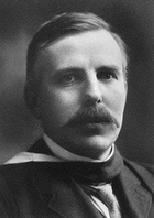 Ernest
Rutherford (1871-1937) Ernest
Rutherford (1871-1937)
 Rutherford's
major works or writings: Rutherford's
major works or writings:
Radio-activity
(1904)
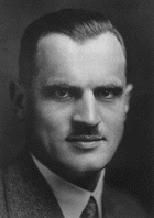 Arthur
Holly Compton (1892-1962) Arthur
Holly Compton (1892-1962)
 Compton's
major works or writings: Compton's
major works or writings:
Secondary Radiations
Produced by X-rays (1922)
X-Rays and Electrons
(1926)
X-Rays in Theory and Experiment
(with S. K. Allison, 1935)
The Freedom of Man
(1935)
Human Meaning of Science
(1940)
 Enrico
Fermi (1901-1954) Enrico
Fermi (1901-1954)
|
|
4. RELATIVITY
Albert
Einstein (1879-1955)
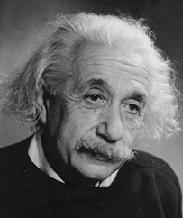 Einstein wanted to unify all branches
of physics around a cohesive set of simple laws, ones that described physical
behavior in all possible settings. Einstein wanted to unify all branches
of physics around a cohesive set of simple laws, ones that described physical
behavior in all possible settings.
He was initially troubled by the
inherent contradictions between the classic understanding of the
relativity
of the laws of mechanics (Galileo and Newton) and the newer view of the
absolute
character of the laws of electromagnetism (Maxwell). With his theory
of special relativity (1905) he demonstrated mathematically that
electromagnetism functions with the same relativity of classic mechanics – because
of the elasticity of space and time! This theory seemed counter-intuitive
at the time, though experiments over the next quarter of a century gave
clear demonstration of the correctness of his theory.
A major difficulty with his theory
of special relativity was that it applied only to "special" situations
(thus its name), that is, situations where light was being measured by
an observer whose momentum was constant. Einstein knew that situations
of perfectly constant momentum (unchanging speed and direction) are rare.
Normally our movements are in constant flux, accelerating, decelerating,
turning, etc. as we encounter varying forces acting externally upon our
movements. Einstein thus set out to define a more comprehensive theory
of mechanical and electromagnetic physics, one he called general relativity.
In this quest for a general theory
of relativity it was the issue of gravity that received his greatest attention.
Through a number of mental "games," he came up with the notion that gravity
is not really a separate force but merely a result of the structuring of
the movement of objects through what he called
spacetime.
This too was counter-intuitive, in the sense that he was attempting to
describe a dimension of physical existence that had no exact parallels
in what we humans have ever been able to perceive directly. As an
analogy of this strange world of general relativity Einstein pointed to
the type of curve that is always described on the surface of a globe
when something attempts to move along the globe's surface in a straight
line.
Another analogy was a rubber membrane
with a heavy iron ball nestled in the center of it – and the effect this
would have if we tried to roll a much smaller ball across the membrane
and past the iron ball in an attempt to reach the other side of the membrane.
Depending on how close the smaller ball came to the larger ball, it might
be led around and past the larger ball by the curvature of the membrane
around the ball – or if it came too close, the smaller ball might be drawn
in a circular path around the larger ball and finally into collision with
it. Einstein asserted that there was no gravitational "force" that
drew the the smaller ball into the orbit of the larger ball – only the curvature
(of spacetime) around the larger ball. Thus gravity was explained
as being (sort of) merely a curve in the flow of spacetime – a curve created
by the presence of concentrated matter/energy. And thus we could
calculate the effect of gravity without having to resort to the notion
of gravity itself, thus eliminating an unnecessary concept in physics and
thus further simplifying physics.
Thus with general relativity Einstein
saw himself moving the discipline of physics closer to a cohesive body
of laws, laws uniformly applicable in a variety of different physical settings.
By eliminating gravity as a separate concept he had certainly moved physics
closer to that goal.
But with the development of the field
of quantum mechanics Einstein felt that the move toward conceptual unity
was headed in the opposite direction. For the longest time he debated
the quantum theorists (Bohr, for instance) – -until he had to admit that
their theoretical world worked – though in apparent contradiction to his
own world of relativity.
For the rest of his life he tried
to close the gap within physics created by the quantum revolution – though
seemingly without further success.

 Einstein's
major works or writings: Einstein's
major works or writings:
Theory of Relativity
"What Is Relativity?" (1919)
The Principle of Relativity
(1923)
"The World As I See It" (1949)
Ideas and Opinions(1954)
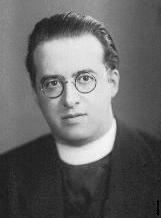 Georges
Lemaître (1894-1966) Georges
Lemaître (1894-1966)
A Belgian priest
and astronomer/physicist who in 1927 first advanced the "Big Bang" theory
of the origins of the universe, based on what he saw as the implications
of Einstein's theory of relativity. |
|
|
5. QUANTUM
MECHANICS
Max
Planck (1858-1947)
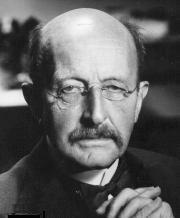 Planck was the German physicist at
the University of Berlin (1889-1926) most noted for laying the foundations
of quantum physics with his idea of the quantum of small particle action,
known as the Planck constant or simply,
h. The constant
h
he developed in his study of black-body radiation – noting that the energy
values emited in such radiation were not of a continuous variety or array
but instead discontinuous, in the the form of discrete, tiny energy packets:
quanta. In other words, Planck demonstrated that the energy given
off in radiation did not vary in a continuous spectrum from slight
to great, but varied over that spectrum in tiny but quantifiable jumps,
which happened to be multiples of h. Thus Planck
quantized
the energy spectrum. Planck was the German physicist at
the University of Berlin (1889-1926) most noted for laying the foundations
of quantum physics with his idea of the quantum of small particle action,
known as the Planck constant or simply,
h. The constant
h
he developed in his study of black-body radiation – noting that the energy
values emited in such radiation were not of a continuous variety or array
but instead discontinuous, in the the form of discrete, tiny energy packets:
quanta. In other words, Planck demonstrated that the energy given
off in radiation did not vary in a continuous spectrum from slight
to great, but varied over that spectrum in tiny but quantifiable jumps,
which happened to be multiples of h. Thus Planck
quantized
the energy spectrum.
These quanta of energy (E)
were measurable as the product of the frequency of the radiation (  or Greek nu) and Planck's constant h. The resultant
energy radiation equation for Planck's constant was thus E=h
or Greek nu) and Planck's constant h. The resultant
energy radiation equation for Planck's constant was thus E=h . .
H was a very small quantity,
approximately 6.626 × 10-34 (h actually works out
to be not much more than 0!). Nonetheless, it was significant enough
that it called into question the assumption held since the time of Newton
that the laws of physics were uniformly applicable under all (rather
than just select or discrete) circumstances.
 Planck's
major works or writings: Planck's
major works or writings:
The Theory of Heat
Radiation (1914)
Where Is Science Going?(1932)
The Philosophy of Physics
(1936)
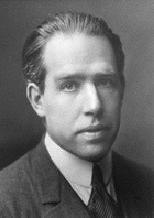 Niels
Bohr (1885-1962) Niels
Bohr (1885-1962)
 Bohr's
major works or writings: Bohr's
major works or writings:
Atomic Physics and
the Description of Nature (1934)
Atomic Physics and Human Knowledge(1958)
 Max
Born (1882-1970) Max
Born (1882-1970)
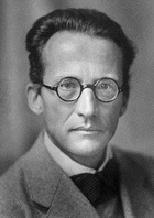 Erwin
Schrödinger (1887-1961) Erwin
Schrödinger (1887-1961)
 Schrödinger's
major works or writings: Schrödinger's
major works or writings:
What Is Life?
Mind and Matter
My View of the World
Nature and the Greeks
Science and Humanism
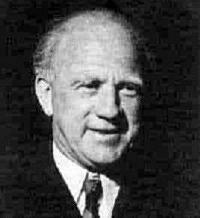 Werner
Heisenberg (1901-1976) Werner
Heisenberg (1901-1976)
Theory of Uncertainty: we cannot
know something as its exists "in and of itself" – because our very action
to observe this thing has a shaping effect on it; it responds to our efforts
to observe it – thus making a "neutral" observation impossible.
 Heisenberg's
major works or writings: Heisenberg's
major works or writings:
Physics and Philosophy
Physics and Beyond
Philosophical Problems of
Quantum Mechanics
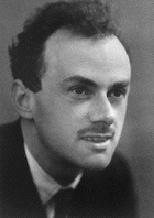 Paul
Adrien Maurice Dirac (1902-1984) Paul
Adrien Maurice Dirac (1902-1984)
 Dirac's
major works or writings: Dirac's
major works or writings:
Quantum Theory of
the Electron (1928)
The Principles of Quantum
Mechanics (1930)
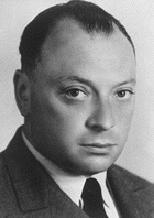 Wolfgang
Pauli (1900-1958) Wolfgang
Pauli (1900-1958)
 Linus
Carl Pauling (1901-1994) Linus
Carl Pauling (1901-1994)
Pauling broadened the reach of quantum
theory by bringing it into the world of molecular chemistry, into the realm
of crystals and into the domain of medicine.
|
|
6. PHILOSOPHICAL
EVALUATIONS OF MODERN SCIENCE
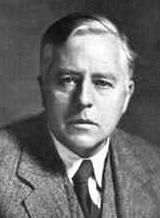 James
Hopwood Jeans (1877-1946) James
Hopwood Jeans (1877-1946)
 Jean's
major works or writings: Jean's
major works or writings:
Physics and Philosophy
(1943)
The Mysterious Universe
Henry Margenau
 Margenau's
major works or writings: Margenau's
major works or writings:
The Nature of Physical
Reality (1950)
The Miracle of Existence
|
DEVELOPERS AND CULTIVATORS OF THE NEW TECHNOLOGY |
Henry
Ford (1863-1947)
 He was born on a farm near Dearborn,
Michigan, and received formal schooling only up to age 15. He loved
mechanical objects and was particularly fascinated with the newly developing
automobile. He undertook to build cars himself. He was born on a farm near Dearborn,
Michigan, and received formal schooling only up to age 15. He loved
mechanical objects and was particularly fascinated with the newly developing
automobile. He undertook to build cars himself.
Always looking for an easier, faster
and cheaper way of building these automobiles, in 1913 Ford began the use
of the assembly line process. This involved the movement away from
custom building of cars to the use of standardized parts and a standardardized
assembly process. He also employed the principle of simplifying the
production process by also simplifying of the features on the automobile.
The basic black Model T was the result. He developed this logic further
by eventually coordinating the entire automobile business from the point
of acquiring raw materials, to the manufacture of parts, to the assembly
of the car, to its final distribution and sales.
This permitted him to lower considerably
per-unit costs and to pass price reductions on to the purchaser – and thus
increase the demand for his product. This brought the automobile
within the economic reach of the middle class. And in turn this transformed
American society into a highly mobile nation – with the home and community
now spread at further distances from the old town and city centers.
|
Sigmund
Freud (1856-1939)
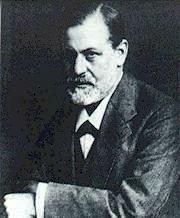 Freud posited an "unconscious" mind
which drives human action from deep, unseen centers within ourselves – in
strong opposition to the popular view of his day that we are moved in our
actions by human reason. Freud posited an "unconscious" mind
which drives human action from deep, unseen centers within ourselves – in
strong opposition to the popular view of his day that we are moved in our
actions by human reason.
Freud believes that we operate unaware
of the influence of these forces within us because we have "repressed"
them, or hidden them from conscious view because they arise from base desires
(often sexual) that have been overlaid by our social consciousness, which
forbids such desires. But our dreams give us away – for dreams involve
the surfacing of such repressed thoughts – ones in fact that may reach way
all the way back to events in our very early childhood.
Freud developed psychoanalysis to
help cure mental illnesses brought on by the kinds of mental conflicts
that can arise from such repression. He not only developed a new
vocabulary for interpreting dreams – but also for interpreting thoughts
brought to the surface through his program of awake-state analysis.
This theory not only was a strong
rebuke to the Victorian pretensions of the day to rational self-control
of all "civilized" people – but it would later serve as an explanation of
the wild irrationality displayed in the mind-boggling destructiveness of
World War One. It also would play a small part in underwriting the
notion of the "naturalness" of the human "will-to-power" popularized in
the Fascist movements of 1930s Europe.
 Freud's
major works or writings: Freud's
major works or writings:
The Interpretation
of Dreams (1900)
Psychopathology of Everyday
Life (1904)
Three Essays on the Theory
of Sexuality
Civilization and Its Discontents
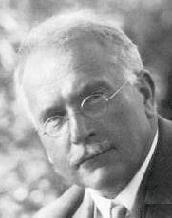
Carl
Gustav Jung (1875-1961)
"Depth" psychologist (Freudian school)
"archetypes" – patterns of thought in relation to "reality" which are present,
in some cohesive form or another, in all cultures (thus universal) – but
which are sufficiently ambiguous that they lend themselves to distinct
interpretation by each culture and generation – though guiding that interpretation
within precise boundaries.
 Jung's major works or writings:
Jung's major works or writings:
Memories, Dreams,
Reflections
Symbols of Transformation
Synchronicity
Psychology and the East
B. F. Skinner
(1904-1990)
 Skinner's
major works or writings: Skinner's
major works or writings:
Beyond Freedom and
Dignity
|
|
SOCIOLOGY AND ANTHROPOLOGY |
James George Frazer
(1854-1941)
Scot, educated at the University
of Glasgow and Cambridge, becoming a fellow in Trinity College at the latter
in 1879 – and then a professor at the University of Liverpool in 1907.
 Frazer's
major works or writings: Frazer's
major works or writings:
The Golden Bough
(1890-1915) (13 vols)
Totemism and Exogamy
(1910)
Man, God, and Immortality
(1927)
Creation and Evolution in
Primitive Cosmogonies (1935)
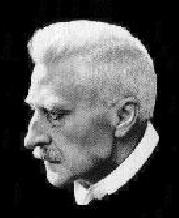
Rudoph
Otto (1869-1937)
German professor of comparative religion.
Searches for the causes of the sense of the "holy." Religion begins with
a sense of the "numinous" (divinity) – ying within the realm of personal
religious experience and not easily definable by reason
 Otto's
major works or writings: Otto's
major works or writings:
The Idea of the Holy
(1917)
Mysticism East and West
(1932)
Bronislaw Malinowski
(1884-1942)
Functionalist. Studied religion
and magic of Tobriand Islanders. Magic and religion play an integrative
function and underpin societal leadership – plus provide psychological support
in times of crisis.
Pitirim
Alexandrovitch Sorokin (1889-1968)
Russian-American founder of the Department
of Sociology at Harvard University in 1930.
 Sorokin's
major works or writings: Sorokin's
major works or writings:
Social and Cultural
Dynamics (4 vol. 1937-1941)
Man and Society in Calamity
(1942)
Claude Levi-Strauss
(1908- )
Structuralist: Studied the
process of thought of a people – in terms of its logical patterns, its intellectual
sources, its systematic character as a cosmology or religion
 Levi-Strauss's
major works or writings: Levi-Strauss's
major works or writings:
Structural Anthropology
(1958)
E.E. Evans-Pritchard
 Evans-Pritchard's
major works or writings: Evans-Pritchard's
major works or writings:
Theories of Primitive
Religion
Nuer Religion(1956)
Gerardus van der
Leeuw (1890-1950)
He studied religion as power.
Power is the source and underlying essence of all religion. The goals
of religion are satisfied when power is achieved (however defined by a
religion). |
|
Benedetto
Croce (1866-1952)

Italian moral/cultural philosopher and
historian.
Born of a noble Italian family, and
living out most of his life in Naples, he wrote reflectively on the proper
ideals of modern Italian culture and politics – particularly in the journal
La
Critica which he founded and in which he published numerous works over
a period of 41 years.
He was sensitive to the need of the
individual to find a way to contribute creatively to the larger culture – and
the needs of a culture to be responsive to the genius of its individual
members. He was opposed to the cynicism bred by World War One which
allowed self-indulgent individualism to run rampant in post-war Italy – and
at first was sympathetic to the ideals of Fascism: everyone working
together toward the common good. But as Italian fascism demonstrated
its true nature, Croce turned against the movement and used his journal
to denounce the pretentious tyranny that Fascism was imposing on Italy.
He used his studies of history (European,
Italian and local) to demonstrate the vital role that civic virtue played
in the greatness of societies – and the dangers to society when such civic
virtue was lacking.
After World War Two his voice was
deeply respected for its push to rebuild Italian civic virtue.
 Croce's
major works or writings: Croce's
major works or writings:
La Critica [
Estetica come scienza dell'espressione
e linguistica generale / Esthetic as Science of Expression and General
Linguistics [or just simply: Esthetic] (1902)
Logica come scienza del concetto
puro / Logic as the Science of Pure Conception (1909)
Filosofia della pratica: economia
ed etica / Philosophy of the Practical: Economic and Ethic (1909)
Teoria e storia della storiografia
/ History: Its Theory and Practice (1917)
La storia come pensiero e
come azione / History as Thought and Action (1938)
Filosofia, poesia, storia
/ Philosophy, Poetry, History (1951)
H.
G. (Herbert George) Wells (1866-1946)
English futurist,
novelist and historian. He was born into a humble middle class family
and received no formal schooling, training instead as an apprentice to
become a draper. He changed jobs several times over the next years.
But he loved to read and became self-taught, until at age 18 he won a scholarship
to study biology at the Normal Institute in London (T.H. Huxley was one
of his teachers). In 1888 he graduated from the University of London
and went to work as a science teacher. He loved writing, and in 1893
published a textbook on biology. But he also had a fertile mind for
science-fiction and in 1895 published The Time Machine, which became
a best seller.
He also had
a deep interest in social questions, ones provoked by a world undergoing
rapid technological change. In 1903 he became a member of the prestigious
The Fabian Society of English social philosophers. But a mounting
dispute with George Bernard Shaw and Sidney and Beatrice Webb a few years
later over the direction of the organization caused him to withdraw.
 Wells'
major works or writings: Wells'
major works or writings:
Textbook of Biology
(1893)
The Time Machine (1895)
The Island of Doctor Moreau
(1896)
The War of the Worlds(1898)
The First Men in the Moon
(1901)
Mankind in the Making
(1903)
A Modern Utopia (1905)
The New Machiavelli
(1911)
The World Set Free (1914)
War and the Future: Italy,
France and Britain at War
Outline of History
(1920)
The Shape of Things to Come
(1933)
The Invisible Man
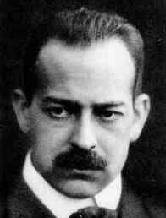 Oswald
Spengler (1880-1936) Oswald
Spengler (1880-1936)
 Spengler's
major works or writings: Spengler's
major works or writings:
The Decline of the
West
Arnold
J. Toynbee (1889-1975)
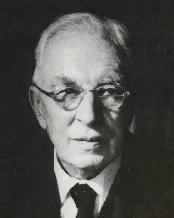
He was professor of international history
at the University of London and director of Studies at the Royal Institute
of International Affairs, 1925 to 1955.
As an historian he wrote history
of civilizations rather than distinct political units. His
most famous work was his 12-volume Study of History, which focused
on 26 distinct civilizations. He was looking in particular for patterns
in their birth, development, maturity, decline and collapse. His
overall conclusion was that civilizations decline not because of economic
or political failure but because of moral and spiritual or religious failure.
Successful civilizations arise because
they possess a vital vision, one which leads them forward through a round
a great achievements.
But problems set in as the original
vision is completed in this achievement, leaving the civilization at a
loss as to where to go next. The very success of the civilization
proves its undoing as it loses its original sense of drive, purpose – the
source of its original identity as a distinct people. A loss of nerve
and energy sets in, a rigid orthodoxy replaces imaginative thinking, and
the prime motivation for living becomes defensive rather than expansive.
Their pleasure now is in the glorious past – not in the future.
This leaves such civilizations open
to dethronement by subject peoples, either from within the civilization
or at its margins, or by outsiders. They newly rising groups within
the decaying civilization may breathe new life back into the civilization – even
as they bring elements of radical change to the program.
 Toynbee's major works or writings:
Toynbee's major works or writings:
The Western Question
in Greece and Turkey (1922)
A Study of History
(12 vols: 1934-1961)
Civilization on Trial
(1948)
Twelve Men of Action in Graeco-Roman
History (1952)
An Historian's Approach to
Religion (Gifford Lectures, 1952-1953)
East to West: A Journey Round
the World (1958)
Hellenism: The History of
a Civilization (1959)
Change and Habit: The
Challenge of Our Time (1966)
Science in Human Affairs:
An Historian's View (1975)
|
|
Julian Huxley
(1887-1975)
 J.
Huxley's major works or writings: J.
Huxley's major works or writings:
Religion without Revelation
(1959)
|
PROCESS PHILOSOPHY
/ THEOLOGY |
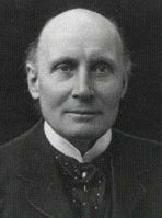 Alfred
North Whitehead (1861-1947) Alfred
North Whitehead (1861-1947)
 Whitehead's
major works or writings: Whitehead's
major works or writings:
Religion in the Making
(1926)
Science and the Modern World
(1927)
Process and Reality
(1929)
Adventures
of Ideas
(1937)
 Pierre
Teilhard de Chardin (1881-1955) Pierre
Teilhard de Chardin (1881-1955)
We actually do not include Pierre
Teilhard de Chardin here in this section – because it really was only until
after his death in 1955 that his real influence began in the West.
For his story go to Pierre
Teilhard de Chardin (Theologians of the Second Half of the 20th Century). |
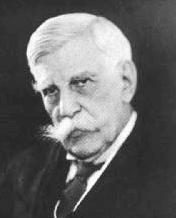 Oliver
Wendell Holmes, Jr. (1841-1935) Oliver
Wendell Holmes, Jr. (1841-1935)
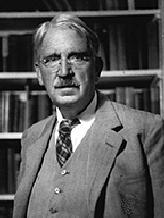 John
Dewey (1859-1952) John
Dewey (1859-1952)
 Dewey's
major works or writings: Dewey's
major works or writings:
Democracy
and Education
Logical Conditions of a Scientific
Treatment of Morality
Humanist Manifesto
(1933)
A declaration drafted in 1933 by
Raymond B. Bragg and signed by a number of individuals, including John
Dewey – which
rejected Christianity and Judaism's claim of a divine origin
of the universe. It proposed to develop a better religious
formual for modern times, which it called "Religious Humanism"
(acknowledging the fact that Humanism is indeed a religion like any
other). It also included the assertion that we are essentially
physical beings (there being no "spiritual" person apart from our
bodily
existences) and cultural by-products. And it also included the
assertion
that our purpose in life is to achieve human happiness through both
personal
and social human self-development.
Humanist
Manifesto
|
|
THEOSOPHY AND RELIGIOUS
SYNCRETISM |
Annie Besant
 Besant's
major works or writings: Besant's
major works or writings:
An Autobiography
(1886)
Why I became a Theosophist
(1889)
Esoteric Christianity; or,
The Lesser Mysteries (1901)
C. W. Leadbeater
 Ledbeater's
major works or writings: Ledbeater's
major works or writings:
An Outline of Theosophy
(1903)
Levi
 Levi's
major works or writings: Levi's
major works or writings:
The Aquarian Gospel
of Jesus the Christ (1907)
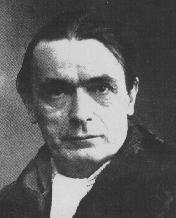 Rudolf
Steiner (1861-1925) Rudolf
Steiner (1861-1925)
Founder of the Anthroposophical Society
(1924) and the Waldorf School Movement
 Steiner's
major works or writings: Steiner's
major works or writings:
Knowledge of the Higher
Worlds and Its Attainment
An Outline of Occult Science
The Reappearance of Christ
in the Etheric
Edgar Cayce (1877-1945)
American photographer and mystic
gifted with psychic powers of medical diagnosis
P. D. Ouspensky
 Ouspensky's
major works or writings: Ouspensky's
major works or writings:
A Key to the Enigmas
of the World (1920)
In Search of the Miraculous:
Fragments of an Unknown Teaching
(1949)
The Fourth Way (1957)
Alice Bailey (1880-1949)
 Bailey's
major works or writings: Bailey's
major works or writings:
Initiation, Human
and Solar (1922)
The Reappearance of the Christ
(1948)
The Externalization of the
Hierarchy (1957)
The Rays and the Initiation
(1960)
Unfinished Autobiography
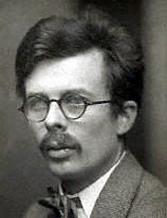 Aldous
Huxley (1894-1963) Aldous
Huxley (1894-1963)
 A.
Huxley's major works or writings: A.
Huxley's major works or writings:
The Defeat of Youth
(1918)
Limbo (1920)
Crome Yellow (1921)
Antic Hay (1923)
Point Counter Point
(1928)
Brave New World (1932)
Eyeless in Gaza (1936)
Grey Eminence (1941)
Time Must Have a Stop
(1944)
Ape and Essence
(1949)
The Perennial Philosophy
(1945)
The Devils of Loudun
(1952)
The Doors of Perception
(1954)
Heaven and Hell
Island (1962)
Jiddhu
Krishnamurti (1895- )
 Krishnamurti's
major works or writings: Krishnamurti's
major works or writings:
The Network of Thought
|
|
Georges Sorel
 Sorel's
major works or writings: Sorel's
major works or writings:
Reflections on Violence
(1908)
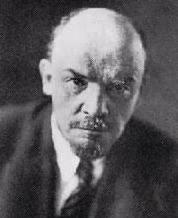 Vladimir
Ilyich Lenin (1870-1924) Vladimir
Ilyich Lenin (1870-1924)
He reorganized the more radical wing
of the Russian Social Democrats into the faction known as the "Bolsheviks"
(1903). He developed the New Economic Policy to revitalize
the war-torn/revolution-torn Russian economy. In 1919 he founded
the Third (Socialist) International with its headquarters in Russia.
 Lenin's
major works or writings: Lenin's
major works or writings:
"Materialism and Empirio-Criticism"
(1909)
"Marxism and Revisionism"
(1908)
"The Three Sources and Three
Component Parts of Marxism" (1913)
"What can be done for public
education" (1913)
"The Historical Destiny of the
Doctrine of Karl Marx" (1913)
"The Marx-Engels Correspondence"
(1913)
"Karl Marx" (1913)
"Disruption of Unity Under Cover
of Outcries for Unity" (1913)
"Slogan for a United States of
Europe" (1913)
"On the Two Lines of the Revolution"
(1913)
State and Revolution
(1917)
"The Military Programme Of The
Proletarian Revolution" (1913)
[Interview with the Manchester
Guardian] (1919)
"A Great Beginning: Heroism of
the Workers in the Rear" (1919)
Left-Wing Communism – an
Infantile Disorder (1920)
"Draft resolutions of the 10th
Congress of the R.C.P." (1921)
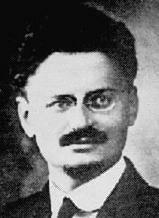 Leon
Trotsky (1879-1940) Leon
Trotsky (1879-1940)
Lev Davidovich Bronstein. Created the
Soviet Red Army. He served as the Soviet Commissar or Minister of
Foreign Affairs, 1918-1925. He was expelled from the Soviet Union
in 1929 under orders from Stalin. He then turned his mighty pen against
Stalin and his "betrayal" of the Bolshevik Revolution. In 1940 he
was silenced by an assassin in Mexico City.
 Trotsky's
major works or writings: Trotsky's
major works or writings:
War
and the International (1914)
Pacifism
as the Servant of Imperialism (1917)
The
New Course (1923)
The
Lessons of October (1924)
The
History of the Russian Revolution (1930)
The
Rise of Hitler and Destruction of the German Left (1930)
Their
Morals and Ours (1936)
The
Revolution Betrayed (1936)
Trotsky
in Norway (1936)
Stalinism
and Bolshevism (1937)
Giovanni Gentile
Alfred Rosenberg
 Rosenberg's
major works or writings: Rosenberg's
major works or writings:
The Myth of the 20th
Century (1930)
|
|
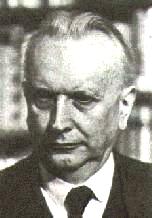 Karl
Jaspers (1883-1969) Karl
Jaspers (1883-1969)
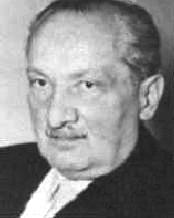 Martin
Heidegger (1889-1976) Martin
Heidegger (1889-1976)
 Heidegger's
major works or writings: Heidegger's
major works or writings:
Being and Time
(1927)
What Is Metaphysics?
(1929)
What Is Called Thinking
(1952)
An Introduction to Metaphysics
(1953)
The Origins of the Work of
Art (1956)
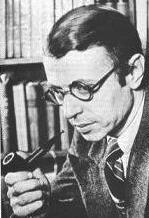 Jean-Paul
Sartre (1905-1980) Jean-Paul
Sartre (1905-1980)
French novelist,
playwrite, philosopher. Existentialist turned social-democrat (Marxist).
 Sartre's
major works or writings: Sartre's
major works or writings:
La Nausée
(1938)
Psychology
of the Imagination (1940)
Being
and Nothingness (1943)
No Exit (1944)
The
Age of Reason (1945) [series: Les chemins de
la liberté/The Roads of Liberty]
The Reprieve (1945)
[series: Les chemins de la liberté/The Roads of Liberty]
Existentialism
and Humanism (1946)
The
Respectful Prostitute (1946)
Troubled Sleep (1949)
[series: Les chemins de la liberté/The Roads of Liberty]
Iron
in the Soul (1949)
Saint Genet, Actor and Martyr
(1952)
The Condemned of Altona
(1959)
Critique
of Dialectical Reasoning (1960)
Words
(1964) [autobiography]
Gustave
Flaubert (3 vols: 1971-1972)
Simone
de Beauvoir (1908-1986)
A French novelist
and philosopher of an existentialist-turned-Marxist bent. She was
hightly critical of middle class or capitalist society. She was linked
personally to Sartre from their college days together until his death in
1980.
 Beauvoir's
major works or writings: Beauvoir's
major works or writings:
L'Invitée
(She Came to Stay)
(1943)
Pyrrhus
et Cinéas (1944)
Le sang
des autres (The Blood of Others) (1945)
Tous
les hommes sont mortels (All Men are Mortal) (1946)
The
Ethics of Ambiguity (1947)
L'Amérique
au jour le jour (1948)
Deuxieme
Sexe (The Second Sex) (1949)
Les
Mandarins (The Mandarins) (1954)
La longue
marche (The Long March) (1957)
Mémoires
d'un jeune fille rangée (Memoirs of a Dutiful Daughter)
(1958) [autobiography]
The
Prime of Life (1960) [autobiography]
La force
des choses (Force of Circumstance) (1963) [autobiography]
A Very
Easy Death 1964 [autobiography]
Les
Belles Images (1966)
La femme
rompue (1968)
The
Coming of Age (1970) [autobiography]
All
Said and Done (1972) [autobiography]
Adieux:
A Farwell to Sartre (1983)
Lettres
au Castor [letters from Sartre to Beauvoir]
|
1.
A MAJOR FOCAL POINT: THE SCOPES "MONKEY" TRIAL
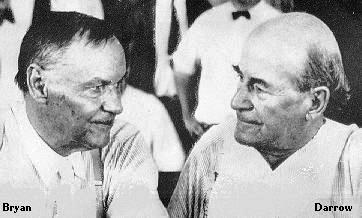
The Trial Itself
(July 10-25, 1925: Dayton, Tennessee)
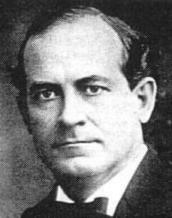 William
Jennings Bryan (1860-1925) William
Jennings Bryan (1860-1925)
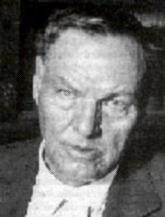 Clarence
Darrow (1857-1938) Clarence
Darrow (1857-1938)
 Some
of Darrow's works or writings on the controversy: Some
of Darrow's works or writings on the controversy:
Absurdities of the
Bible
Why I Am An Agnostic
The Lord's Day Alliance
|
|
2. FUNDAMENTALISM
John Gresham Machen
(1881-1937)
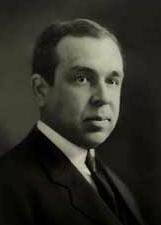 Machen
was New Testament professor at Princeton Seminary. Among the several
books he published was Christianity and Liberalism
(1923), in which
he claimed that Christian Liberalism was not even Christianity, but
some
other religion. He was distressed that Christian Liberals
believed
(like Unitarians) that Christ was not a "personal savior" but instead a
"personal teacher," setting moral examples which all, Christian and
non-Christian,
ought to follow. And Liberalism tended to view Christianity as
simply
one of many ways that led to the Fatherhood of God. Machen
was New Testament professor at Princeton Seminary. Among the several
books he published was Christianity and Liberalism
(1923), in which
he claimed that Christian Liberalism was not even Christianity, but
some
other religion. He was distressed that Christian Liberals
believed
(like Unitarians) that Christ was not a "personal savior" but instead a
"personal teacher," setting moral examples which all, Christian and
non-Christian,
ought to follow. And Liberalism tended to view Christianity as
simply
one of many ways that led to the Fatherhood of God.
When in 1928 the Presbyterian General
Assembly voted to move Princeton from a traditionally conservative theology
to a more liberal position, Machen and two other Princeton professors withdrew
from the seminary to start a new one in nearby Philadelphia: Westminster
Seminary.
In 1935 Machen was suspended from
the Presbyterian ministry.
 Machen's
major works or writings: Machen's
major works or writings:
Christianity
and Liberalism (1923)
Cornelius Van
Til (1895-1987)
Van Til was born in the Netherlands,
but came to Indiana at age ten with his family in order to farm.
He attended Calvin College, Princeton Seminary, received a Ph.D. from Princeton
University and became an instructor at Princeton Seminary in 1928 – but
the next year joined the newly formed Westminster Theological Seminary
as professor of Apologetics after the liberal-conservative split at Princeton.
 Van
Til's major works or writings: Van
Til's major works or writings:
Why I Believe in God
A Survey of Christian Epistemology
(1932)
A Survey of Christian Epistemology
The Defense of the Faith
Introduction to Systematic
Theology
Christianity and Barthianism
The New Modernism
The Protestant Doctrine of
Scripture (1967)
Christian Theistic Ethics
(1971)
A Christian Theory of Knowledge
(1972)
Common Grace and the Gospel
(1972)
My Credo
|
|
3. CHRISTIAN
LIBERALISM
The Auburn
Affirmation (1924)
signed by 1,274 Presbyterian ministers
Harry Emerson
Fosdick (1878-1969)
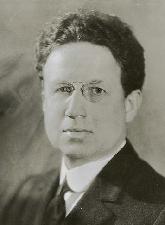 Liberal
preacher Harry Emerson Fosdick presented a sermon at the First Presbyterian
Church of New York City entitled "Shall
the Fundamentalists Win?" Liberal
preacher Harry Emerson Fosdick presented a sermon at the First Presbyterian
Church of New York City entitled "Shall
the Fundamentalists Win?"
So incensed was the General Assembly
(sort of a Presbyterian Congress) at what it considered an attack on the
fundamentals of the faith that it considered removing Fosdick from the
pulpit (he was defended by the New York Lawyer, John Foster Dulles, who
would serve as America's Secretary of State during the Eisenhower presidency
in the 1950s).
But Fosdick instead simply resigned
his position (John D. Rockefeller would select Fosdick to pastor the prestigious
Riverside Church that he had funded!). |
|
|
4. EVANGELICALISM
To 20th century
evangelicals, God's Word is True – but such truth comes to the believer
through the mysterious work of the Spirit and is based on the inner
perceptions of personal faith.
Thus evangelicalism
is not to be confused with "fundamentalism" which stresses the rational
and objective basis of the truth of God's Word in Scripture.
But neither
is is evangelicalism aligned with "liberalism" which also (like fundamentalism)
tries to base the truth of God's Word on some objective factual basis,
a basis which however Liberals recognize as being much reduced in
extent from what the fundamentalists believe to be the case – because of
the many flaws which text-criticism has revealed as existing
within the literature of scripture.
Evengelicalism departs very strongly
from both fundamentalism and liberalism, which attempt to found the Christian
faith on some sort of objective system of "facts." Faith, not fact,
is the truth-foundation for evangelicalism.
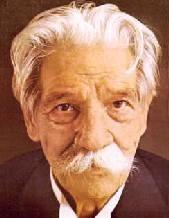 Albert
Schweitzer (1875-1965) Albert
Schweitzer (1875-1965)
Schweitzer carried forth Weiss' critique
of Biblical criticism, pointing out that Jesus lived entirely to the expectation
that the Kingdom of God was immanent and that it is absurd to speculate
using modern logic that Jesus was trying to force the event with his death.
He also pointed out the impossibility
of extracting a "true" or "historical" Jesus from the scriptural account
of the early church – for what was given there was not a "factual" description
of Jesus at all, but rather the reflections of the faithful as to the ultimate
meaning of Christ.
 Schweitzer's
major works or writings: Schweitzer's
major works or writings:
The Mystery of the
Kingdom of God (1901)
In the Quest of the Historical
Jesus (1906)
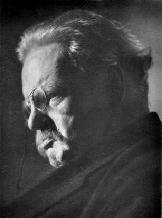 G.K.
(Gilbert Keith) Chesterton (1874-1936) G.K.
(Gilbert Keith) Chesterton (1874-1936)
 Chesterton's
major works or writings: Chesterton's
major works or writings:
Orthodoxy
(1908)
Heretics (1908)
What's Wrong With the World
(1910)
The Everlasting Man
(1925)
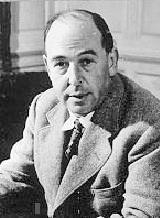
C.S.
(Clive Staples) Lewis (1898-1963)
Born in Belfast, Northern Ireland.
He is sometimes remembered for his tender romance with an American fan
of his, Joy Davidman
 Lewis's
major works or writings: Lewis's
major works or writings:
The Allegory of Love:
A Study in Medieval Tradition (1936 )
The Screwtape Letters
(1942)
Beyond Personality: the Christian
Idea of God (1944)
The Chronicles of Narnia
Abolition of Man (1947)
Mere Christianity
(1952)
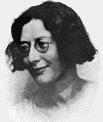 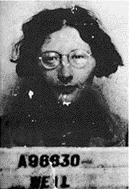 Simone
Weil (1909-1943) Simone
Weil (1909-1943)
 Weil's
major works or writings: Weil's
major works or writings:
Waiting on God
|
|
5. "NEO-ORTHODOXY"
Neo-orthodoxy was a close cousin
to evangelicalism – in that it stressed the role of faith as the foundation
for the Truth of God. But it tended to look to the broad range and
long run of such faith, the faith-witness of countless generations of Christians
over the centuries, to give some degree of "objective" character to such
truth. Thus to the neo-orthodox, the all-important "faith" that underpins
the Christian truth is importantly to be found the collective, historical
voice of the church, the living "body of Christ."
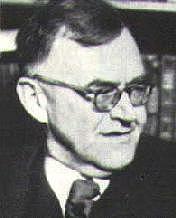 Karl
Barth (1886-1968) Karl
Barth (1886-1968)
Barth was a formulator of "neo-orthodoxy":
revitalization of the dogmas of traditional Christianity as the key to
faith. Scripture, guided by the exegetical
traditions of the church, is the surest source of faith – and Divine Truth
He was opposed to an "historic" Jesus – as
unproveable and irrelevant He posited instead the Christ of faith,
who acts to deepen faith in the heart of the believer.
 Barth's
major works or writings: Barth's
major works or writings:
Church Dogmatics
The Humanity of God(1960)
Emil Brunner (1889-1965)
 Brunner's
major works or writings: Brunner's
major works or writings:
Dogmatics
Truth as Encounter
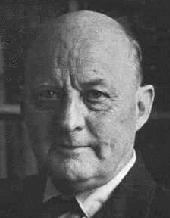 Reinhold
Niebuhr (1893-1971) Reinhold
Niebuhr (1893-1971)
A Protestant theologian best known
for his study of the task of relating the Christian faith to the reality
of modern politics and diplomacy.
He attended Elmhurst College (Illinois),
Eden Seminary (St. Louis, Missouri) and Yale University, receiving a Batchelor
of Divinity Degree from Yale in 1914. In 1915 he was ordained a pastor
in the Evangelical Church and took up a pastorate in Detroit, Michigan,
where he remained for the next 13 years. In 1928 he took up a teaching
position at Union Theological Seminary in New York City.
During his life's intellectual journey
he moved from socialism to a position of political "realism" which acknowledges
the human aptitude for both sin and goodness – and therefore the necessity
of certain (democratic) political structures to keep human behavior on
the right track. But even these political structures needed to be
worked with great caution. Ultimately it was the sovereignty of God
that all the world needed to look to as the only unfailing source of goodness
in life.
 Reinhold
Niebuhr's major works or writings: Reinhold
Niebuhr's major works or writings:
Leaves from the Notebook
of a Tamed Cynic (1929)
Moral Man and Immoral Society
(1932)
An Interpretation of Christian
Ethics (1935)
The Nature and Destiny of
Man (2 vols: 1941-1943)
The Children of Light and
the Children of Darkness:
A Vindication
of Democracy and a Critique of Its Traditional Defence(1944)
Faith and History: A Comparison
of Christian and Modern Views of History (1949)
The Irony of American History
(1952)
The Self and the Dramas of
History (1955)
The Structure of Nations and
Empires (1959)

H. Richard Niebuhr
(1894-1962)
Protestant theologian teaching at
Yale Divinity School (1931-1962). He is known best for his interest
in how the Christian faith is mediated through popular culture – and how
the church should present the Christian gospel in such a way that it could
be clearly understood in the context of modern culture.
He was the younger brother of Reinhold
Niebuhr and followed his older brother's footsteps in attending Elmhurst
College and Eden Seminary – before travelling east to Yale where he took
a Ph.D. in theology. He returned to the mid-West where he taught
at Eden Seminary (1919-1922 and 1927-1931) and served as President of Elmhurst
College (1924-1927). In 1931 he moved permanently to the East
to become a professor of theology and ethics at Yale Divinity School.
 H. Richard Niebuhr's major works or writings:
H. Richard Niebuhr's major works or writings:
The Social Sources
of Denominationalism (1929)
The Kingdom of God in America
(1937)
The Meaning of Revelation
(1941)
Christ and Culture
(1951)
The Purpose of the Church
and Its Ministry (1954)
Radical Monotheism and Western
Culture (1960)
The Responsible Self
(1963).
Faith on Earth: An Inquiry
into the Structure of Human Faith
(edited by his son, Richard R. Niebuhr, 1989)
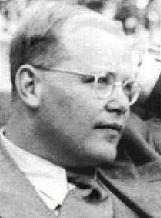 Dietrich
Bonhoeffer (1906-1945) Dietrich
Bonhoeffer (1906-1945)
 Bonhoeffer's
major works or writings: Bonhoeffer's
major works or writings:
Akt und Sein - Act
and Being (1931)
Creation and Fall(1933)
Nachfolge - The Cost of Discipleship
(1937)
Gemeinsames Leben - Life Together
(1939)
Ethik - Ethics (posthumously:
1949)
Widerstand und Ergebung -
Letters and Papers from Prison (posthumously: 1951)
 |
|
6. CHRISTIAN
EXISTENTIALISM
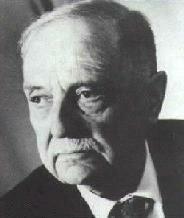 Rudolph
Bultmann (1884-1976) Rudolph
Bultmann (1884-1976)
 Bultmann's
major works or writings: Bultmann's
major works or writings:
Theology of the New
Testament (2 vols: 1951/1955)
Jesus Christ and Mythology
(1958)
 Paul
Tillich (1886-1966) Paul
Tillich (1886-1966)
 Tillich's
major works or writings: Tillich's
major works or writings:
The Religious Situation
(1926)
The Socialist Decision
(1932)
On the Boundary (1936)
The Protestant Era
(1948)
The Courage to Be
(1952)
Systematic Theology
(3 vols: 1951/1957/1963)
|
|
7. ROMAN
CATHOLICISM
Maurice de Wulf
(1867-1947)
Pope Pius X
(pope: 1903-1914)
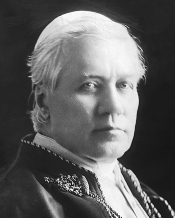 Giuiseppe
Melchiore Sarto (1835-1914). He was born in poverty in Northern
Italy ... worked hard to get an education, became a priest, and became
popular among the common people for his simplicity and affection.
He would remain ever-dedicated to the Franciscan idea of poverty being
a key part of the dignity of the faithful. Even with his rise in
the ranks of the Catholic clergy, he held as much as possible to that
principle ... and refused to extend any particular material favors to
his family ... who remained pretty much in that same state of
poverty during his papacy.
He was an excellent preacher and got the attention of the Church’s
higher officials ... was elevated in rank and eventually came to the
notice of Leo XIII.
As pope, he was particularly interested in restoring Catholic worship
rituals. And he too was a strong supporter of the idea of Mary as
holy Mother of the faithful. And he too was a strong
Thomist. He also restored the Gregorian Chant ... and emphasized
the critical importance of the Eucharistic mass. And he was
strongly opposed to theological Modernism ... with its efforts to
update our understanding of scripture and Church theology, in order to
bring it more in line with the secular-materialist worldview coming
into dominance at the time. He viewed such Modernism as pure
heresy, and to be opposed on all counts.
He also took a much less diplomatic approach to Europe’s secular states
... even breaking off diplomatic relations with France’s Third Republic
(1905). And his tightening of restrictions about religiously-mixed
marriages actually succeeded in heightening the religious discord
between Protestants and Catholics in Ireland! He did however end
the decree prohibiting Italian Catholics from voting. But
relations in general with the Italian state did not improve any during
his papacy. Giuiseppe
Melchiore Sarto (1835-1914). He was born in poverty in Northern
Italy ... worked hard to get an education, became a priest, and became
popular among the common people for his simplicity and affection.
He would remain ever-dedicated to the Franciscan idea of poverty being
a key part of the dignity of the faithful. Even with his rise in
the ranks of the Catholic clergy, he held as much as possible to that
principle ... and refused to extend any particular material favors to
his family ... who remained pretty much in that same state of
poverty during his papacy.
He was an excellent preacher and got the attention of the Church’s
higher officials ... was elevated in rank and eventually came to the
notice of Leo XIII.
As pope, he was particularly interested in restoring Catholic worship
rituals. And he too was a strong supporter of the idea of Mary as
holy Mother of the faithful. And he too was a strong
Thomist. He also restored the Gregorian Chant ... and emphasized
the critical importance of the Eucharistic mass. And he was
strongly opposed to theological Modernism ... with its efforts to
update our understanding of scripture and Church theology, in order to
bring it more in line with the secular-materialist worldview coming
into dominance at the time. He viewed such Modernism as pure
heresy, and to be opposed on all counts.
He also took a much less diplomatic approach to Europe’s secular states
... even breaking off diplomatic relations with France’s Third Republic
(1905). And his tightening of restrictions about religiously-mixed
marriages actually succeeded in heightening the religious discord
between Protestants and Catholics in Ireland! He did however end
the decree prohibiting Italian Catholics from voting. But
relations in general with the Italian state did not improve any during
his papacy.
 Pius
X's major works or writings: Pius
X's major works or writings:
Pope Benedict XV (pope: 1914-1922)
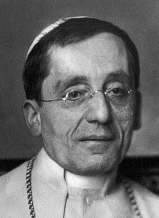
Giacomo Paolo Giovanni Battista della Chiesa (1854-1922). From
the very outbreak of the Great War (World war One) he declared the
Catholic Church to be neutral in this nationalist contest.
Indeed, he tried on two occasions (1916 and 1917) to formally mediate
the conflict ... but was rejected by both sides of the contest.
He undertook to offer humanitarian aid to both soldiers (captured
and/or wounded) and hungry civilians.
After the war he was not only able to restore
diplomatic relations with France, he worked to improve relations with
the Italian state, allowing Catholics to participate in its public
offices.
 Pius Benedict's major works or writings: Pius Benedict's major works or writings:
Pope Pius XI
(pope: 1922-1939)
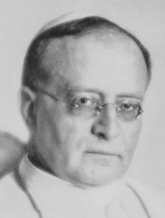 Ambrogio
Damiano Achille Ratti (1857-1939). As pope, he confirmed Thomist
theology as foundational to Catholicism, emphasizing the role of
the Vatican’s own Dominican-administered university - the Pontifical
University of Saint Thomas Aquinas - as the Church’s own primary
academic institution devoted to teaching Thomist theology and
philosophy.
He worked to
improve diplomatic relations with Europe’s various states, finally
ending the standoff with the Italian government by the signing of the
Lateran Treaty of 1929.
But in 1931 he issued another encyclical Non abbioamo
bisogno (We Do Not Need), not opposing the Italian state as such ...
but very strongly condemning Mussolini’s Fascist political philosophy
... especially in the way that it was directed again the Church and two
of its key organizations, Italian Catholic Action and the Italian
Catholic Youth Organization.
With respect to similar developments in German he did sign a Reichskonkordat
in 1933 with Hitler’s Germany ... in the hopes of softening the
persecution just underway against German Catholic clergy and Catholic
politicians by the Nazis. But ultimately Hitler paid no attention
to the terms of the agreement. Catholics, priests and
parishioners, were arrested on wild charges ... solely to shut down all
voices in Germany except Hitler’s.
Finally, in 1937, Pius repudiated the Reichskonkordat, issuing a new encyclical, Mit brennender Sorge (with Burning Anxiety)
condemning the political-ideological trends that had developed in
Germany under the “mad prophet” (Hitler) ... an encyclical secretly
distributed (300,000 copies in German) to be read from Germany’s
Catholic pulpits on Easter Sunday. Hitler was furious ... and had
his Gestapo seize all copies they could get their hands on ... and
increased dramatically the oppression of the Catholic Church.
Catholic schools were shut down. Catholic youth organizations
were ended. But amazingly, Catholics seemed to stand with the
pope in this matter ... at least for the present. Ambrogio
Damiano Achille Ratti (1857-1939). As pope, he confirmed Thomist
theology as foundational to Catholicism, emphasizing the role of
the Vatican’s own Dominican-administered university - the Pontifical
University of Saint Thomas Aquinas - as the Church’s own primary
academic institution devoted to teaching Thomist theology and
philosophy.
He worked to
improve diplomatic relations with Europe’s various states, finally
ending the standoff with the Italian government by the signing of the
Lateran Treaty of 1929.
But in 1931 he issued another encyclical Non abbioamo
bisogno (We Do Not Need), not opposing the Italian state as such ...
but very strongly condemning Mussolini’s Fascist political philosophy
... especially in the way that it was directed again the Church and two
of its key organizations, Italian Catholic Action and the Italian
Catholic Youth Organization.
With respect to similar developments in German he did sign a Reichskonkordat
in 1933 with Hitler’s Germany ... in the hopes of softening the
persecution just underway against German Catholic clergy and Catholic
politicians by the Nazis. But ultimately Hitler paid no attention
to the terms of the agreement. Catholics, priests and
parishioners, were arrested on wild charges ... solely to shut down all
voices in Germany except Hitler’s.
Finally, in 1937, Pius repudiated the Reichskonkordat, issuing a new encyclical, Mit brennender Sorge (with Burning Anxiety)
condemning the political-ideological trends that had developed in
Germany under the “mad prophet” (Hitler) ... an encyclical secretly
distributed (300,000 copies in German) to be read from Germany’s
Catholic pulpits on Easter Sunday. Hitler was furious ... and had
his Gestapo seize all copies they could get their hands on ... and
increased dramatically the oppression of the Catholic Church.
Catholic schools were shut down. Catholic youth organizations
were ended. But amazingly, Catholics seemed to stand with the
pope in this matter ... at least for the present.
 Pius
XI's major works or writings: Pius
XI's major works or writings:
Pope Pius XII
(pope: 1939-1958)
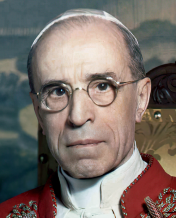 Eugenio
Maria Guiseppe Giovanni Pacelli (1876-1958). Italian of
aristocratic origins (and well-placed family in the church hierarchy)
who served as papal representative to various European monarchs, to the
newly established Soviet Union ... though most importantly to Weimar
Germany. Then as the pope’s Secretary of State (1930) he would be
responsible for the Vatican’s foreign policies. He would
eventually (1933) be responsible for establishing the Catholic Church’s
Reichskonkordat with Germany (protecting the rights of the Catholic
Church in an increasingly secular Germany). He would also set up
similar treaties with other European nations: Austria (1933),
Yugoslavia (1935), and Portugal (1940).
During the war, now serving as pope, he worked to keep the papacy
neutral ... pleasing neither side and bringing him much criticism after
the war. He was accused of turning a blind eye to the Jewish
holocaust. But in fact he had those working under him (Roncalli,
for instance) working at the problem. And Pius apparently had
links to the German Resistance during the war.
After the war he was a very strong voice in opposition to the
persecution and deportation of Catholic priests by the Communist
governments in Soviet-controlled East Europe.
He also confirmed the concept of the Immaculate Conception, the
sinlessness, and the bodily Assumption (“taking up” to Heaven) of the
Virgin Mary in his Munificentissimus Deus in 1950. Eugenio
Maria Guiseppe Giovanni Pacelli (1876-1958). Italian of
aristocratic origins (and well-placed family in the church hierarchy)
who served as papal representative to various European monarchs, to the
newly established Soviet Union ... though most importantly to Weimar
Germany. Then as the pope’s Secretary of State (1930) he would be
responsible for the Vatican’s foreign policies. He would
eventually (1933) be responsible for establishing the Catholic Church’s
Reichskonkordat with Germany (protecting the rights of the Catholic
Church in an increasingly secular Germany). He would also set up
similar treaties with other European nations: Austria (1933),
Yugoslavia (1935), and Portugal (1940).
During the war, now serving as pope, he worked to keep the papacy
neutral ... pleasing neither side and bringing him much criticism after
the war. He was accused of turning a blind eye to the Jewish
holocaust. But in fact he had those working under him (Roncalli,
for instance) working at the problem. And Pius apparently had
links to the German Resistance during the war.
After the war he was a very strong voice in opposition to the
persecution and deportation of Catholic priests by the Communist
governments in Soviet-controlled East Europe.
He also confirmed the concept of the Immaculate Conception, the
sinlessness, and the bodily Assumption (“taking up” to Heaven) of the
Virgin Mary in his Munificentissimus Deus in 1950. Pius
XII's major works or writings: Pius
XII's major works or writings:
Mystici corporis Christi
(1943)
Munificentissimus Deus
(1950) the doctrine of the Assumption of Mary
Humani generis(1950)
Jacques Maritain
(1882-1973)
Etienne Gilson
(1884-1978)
 Gilson's
major works or writings: Gilson's
major works or writings:
The Christian Philosophy
of St. Thomas Aquinas (1961)
|
Martin
Buber (1878-1965)
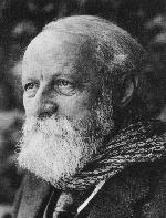
Originally raised in a "modern" German-Jewish
home, Buber as a young man was to take up mysticism, notably Hassidic Judaism.
He was increasingly disenchanted with the modern vision of life and sought
for a deeper sense of life's purpose. In particular he was looking
for a path that brought him to a closer connection with God, and through
God to a deeper connection with the rest of the world, both natural and
human.
He was an ardent Zionist – though
a cultural Zionist rather than a political Zionist, and less interested
in the establishment of a well-defended Jewish state than in the establishment
of an open Jewish society.
 Buber's
major works or writings: Buber's
major works or writings:
Ich und Du
(I
and Thou) (1923)
Chassidischen Bücher
(Tales
of the Hasidim)
(1927)
Netivot be-utopya
(Paths
in Utopia/Pfade in Utopia)
1947
Der Weg des Menschen nach
der Chassidischen Lehre (The Way of Man, According to the Teachings
of Hasidism) 1948
Bilder von Gut und Böse
(Images of Good and Evil)
(1952)
|
|
THE FIRST
HALF OF THE 20TH CENTURY: A FULL STORY |
| | | | | | | |

